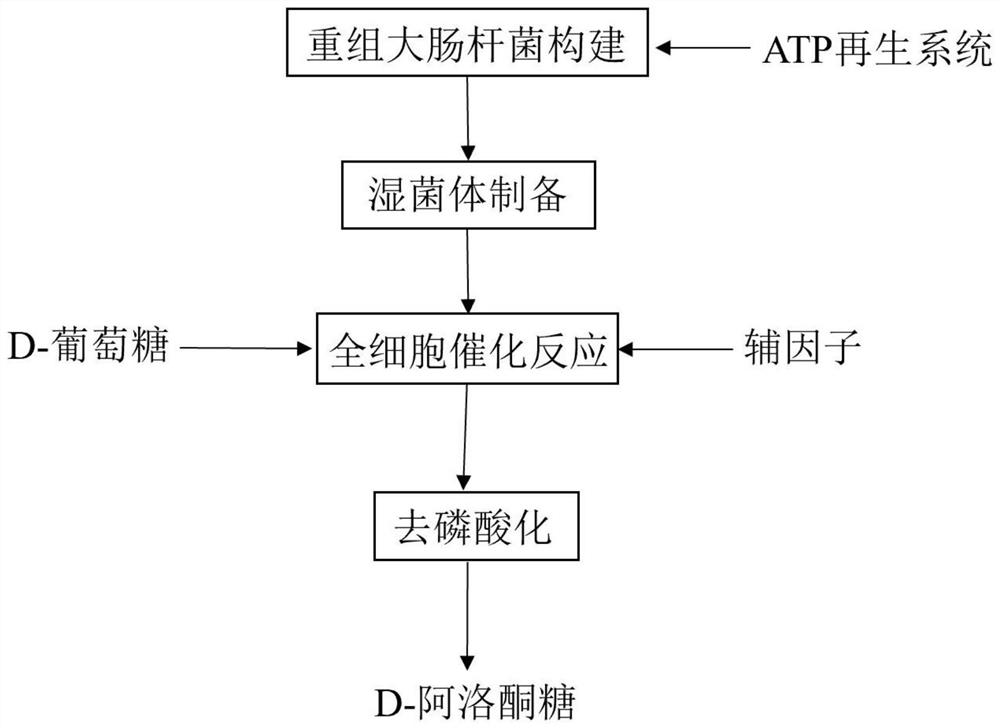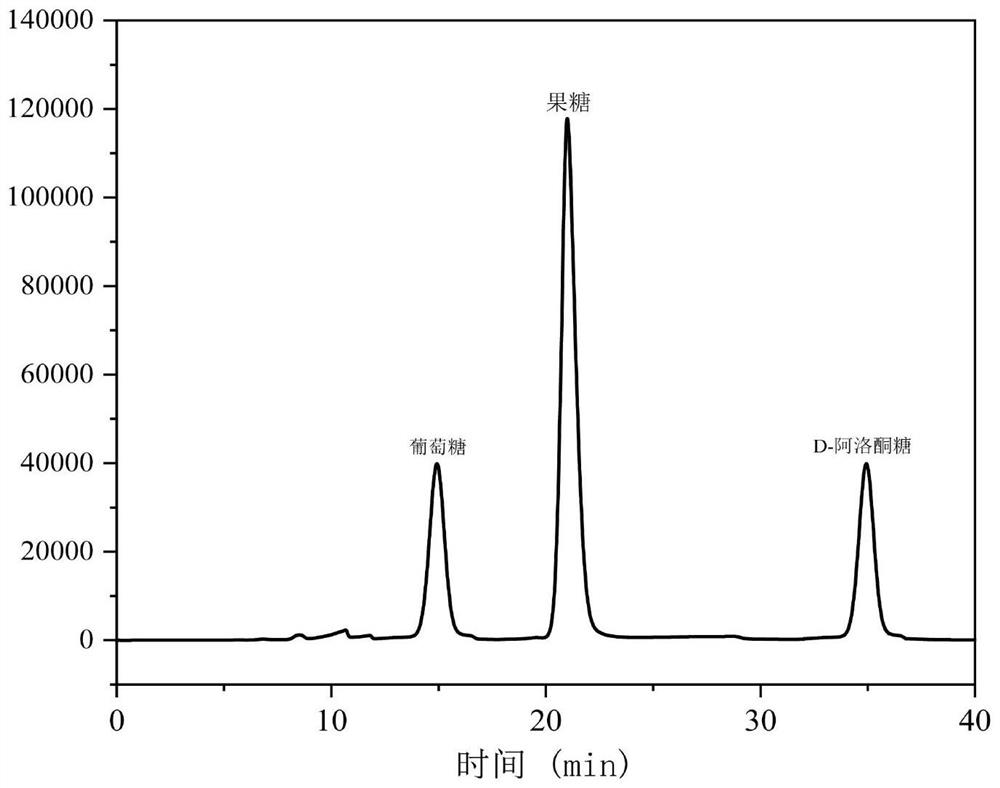Method for synthesizing D-psicose by combining phosphorylation and ATP (adenosine triphosphate) regeneration system
A technique of psicose and dephosphorylation, applied in the field of synthetic biology, can solve problems such as low material conversion rate, achieve the effects of low cost, increase ATP content, and reduce preparation cost
- Summary
- Abstract
- Description
- Claims
- Application Information
AI Technical Summary
Problems solved by technology
Method used
Image
Examples
Embodiment 1
[0032] This example is an implementation example of a method for synthesizing D-psicose by combining phosphorylation and ATP regeneration system, and the specific steps are as follows:
[0033] (1) Construction of recombinant Escherichia coli:
[0034] Construction of the recombinant plasmid pRSFDuet-gi: The gi gene fragment derived from Bacillus.sp was used as a template, gi-F: ccacagccaggatccgaattcaatgagcctgaccaccgc (BamHI) was used as an upstream primer, and gi-R: gcattatgcggccgcaagcttttaaccacgcgcgccc (HindIII) was used as a downstream primer for PCR amplification , the plasmid pRSFDuet-1 was double-digested at 37°C with restriction endonucleases BamHI and HindIII, and then the gene fragment was recombined with the plasmid pRSFDuet-1 using a seamless cloning kit to obtain the recombinant plasmid pRSFDuet-gi.
[0035] Construction of the recombinant plasmid pRSFDuet-gi-dpe: the dpe gene fragment derived from Clostridium bolteae ATCCBAA-613 was used as a template, dpe-F: agat...
Embodiment 2
[0044] The temperature of the whole reaction system was 30° C. during the whole-cell catalytic reaction, and the rest of the operations were the same as in Example 1.
Embodiment 3
[0046] The temperature of the whole reaction system was 37° C. and the pH was 8.0 during the whole-cell catalyzed reaction, and the rest of the operations were the same as in Example 1.
PUM
 Login to View More
Login to View More Abstract
Description
Claims
Application Information
 Login to View More
Login to View More - R&D
- Intellectual Property
- Life Sciences
- Materials
- Tech Scout
- Unparalleled Data Quality
- Higher Quality Content
- 60% Fewer Hallucinations
Browse by: Latest US Patents, China's latest patents, Technical Efficacy Thesaurus, Application Domain, Technology Topic, Popular Technical Reports.
© 2025 PatSnap. All rights reserved.Legal|Privacy policy|Modern Slavery Act Transparency Statement|Sitemap|About US| Contact US: help@patsnap.com



